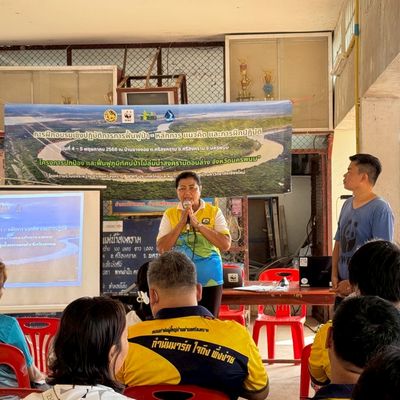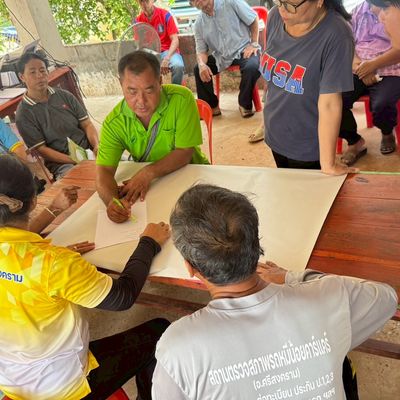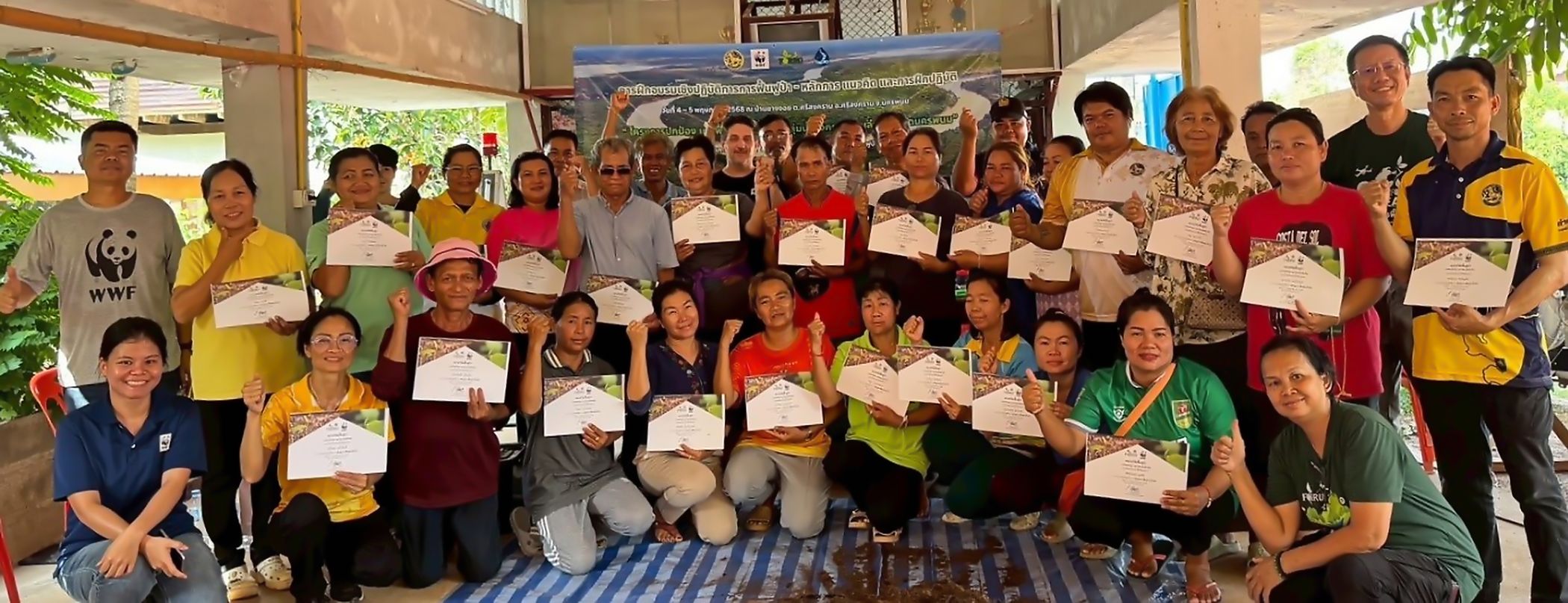Teaching Forest Ecosystem Restoration in the Lower Songkhram River Basin
On May 4–5, 2025, FORRU-CMU joined with Si Songkhram District Office to run a technical training workshop under WWF Thailand's project: “Protecting and Restoring Forest Landscapes in the Lower Songkhram River Basin.” The event featured a hands-on forest-restoration training workshop, focusing on the principles and concepts of forest-ecosystem restoration and including many practical exercises for members of the Ban Yang Ngoi and Ban Sri Woenchai communities in Si Songkhram District, Nakhon Phanom Province.
Theories and Practice
Kicking off the event, Associate Professor Dr. Prasit Wangpakapanwong delivered a lecture on the importance of forest ecosystems, methods for restoring degraded areas, and the use of framework tree species in forest restoration. During the activity, the villagers showed strong interest in conservation approaches and the restoration of their community forests.
In the past, the area of Sri Songkhram District was rich in diverse native plant species, which the local used for many purposes e.g. Kra Bao, Samed, Sanun, Nham Taeng, Jang, and Tiew trees. However, the forest has become degraded over time, raising awareness among the villagers about the importance of forest restoration. They are now committed to actively participating in efforts to restore these natural areas.

The villagers then participated in practical field activities, including learning about the importance of a "reference" forest for setting the goals of restoration and as a seed source. In the Ban Yang Ngoi community forest, they learnt how to collect phenology data, to plan seed collection scheduling. They also practiced seed-collection, using the sand ball technique with the trees: White Samet (Eugenia grata) and Yang Heang (Dipterocarpus obtusifolius) and learnt how to prepare voucher specimens for species identification. Through these experiences, the villagers gained knowledge and a deeper awareness of the importance of community forests, helping to promote the sustainable conservation of natural resources and forests.



Hands-on Field Practice
On the second day, the villager learnt how to perform a rapid site assessment, vital for planning effective restoration projects. They were also introduced to tree planting techniques, maintenance and care of trees in restoration plots (weeding and fertilizer regimes) and methods for monitoring tree survival and growth over the first few years after planting. 
Furthermore, the villagers learned about the various steps involved in establishing and managing a tree nursery. This included nursery design, key nursery processes such as seed preparation and extraction, seed germination, seedling plotting and caring for the seedlings as they grow up to a plantable size.


Throughout the activity, the villagers showed great interest in these processes and had the opportunity to engage in hands-on practice across several stages. Their participation reflected a strong commitment to contributing to the sustainable restoration of their community’s natural resources and ecosystems.

The Bung and Tam forests—seasonally flooded forest ecosystems in the wetland areas of the Lower Songkhram River Basin, Sri Songkhram District, Nakhon Phanom Province—have been designated as a Ramsar Site, recognized as Wetland of International Importance. It is the 2,420th Ramsar Site in the world and the 15th in Thailand. This designation reflects the area’s rich biodiversity, which includes important species such as Dendrocalamus membranaceus (a type of bamboo) and Cephalanthus tetrandra (locally known as Chaiwan). The area is considered a vital natural resource of the Lower Songkhram River Basin.
More information:
Thai PBS. (2020, August 13). Restoring the Bung and Tam Forests of the "Songkhram River" as a Nursery Ground for Mekong Fish. Retrieved from https://www.thaipbs.or.th/news/content/295435
Arcadian Eco. (2025, March 29). Lower Songkhram River: An Ecosystem Worth Conserving. Retrieved from https://arcadianeco.com/2025/03/29/แม่น้ำสงครามตอนล่างระบบ/

































